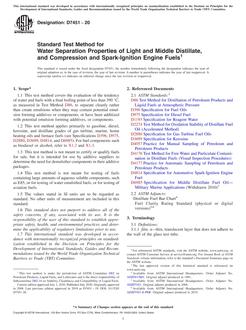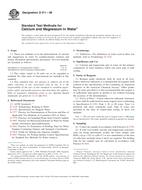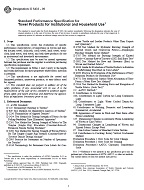1.1 This test method establishes the recommended procedures for quantitative testing, reporting, and verifying the energy absorption and reaction force of marine fenders. Marine fenders are available in a variety of basic types with several variations of each type and multiple sizes and stiffnesses for each variation. Depending on the particular design, marine fenders may also include integral components of steel, composites, plastics, or other materials. All variations shall be performance tested and reported according to this test method.
1.2 There are three performance variables: berthing energy, reaction, and deflection. There are two methods used to develop Rated Performance Data (RPD) and published performance curves for the three performance variables.
1.3 The primary focus is on fenders used in berthside and ship-to-ship applications for marine vessels. This testing protocol does not address small fendering “bumpers” used in pleasure boat marinas, mounted to hulls of work boats, or used in similar applications; it does not include durability testing. Its primary purpose is to ensure that engineering data reported in manufacturers’ catalogues are based upon common testing methods.
1.4 The values stated in SI units are to be regarded as the standard.
1.5 This standard does not purport to address all of the safety concerns, if any, associated with its use. It is the responsibility of the user of this standard to establish appropriate safety and health practices and determine the applicability of regulatory limitations prior to use.
Product Details
- Published:
- 07/10/2002
- Number of Pages:
- 4
- File Size:
- 1 file , 67 KB


